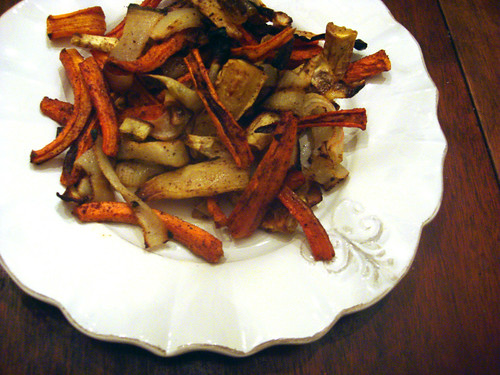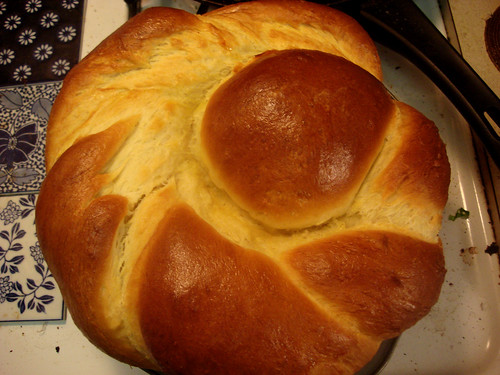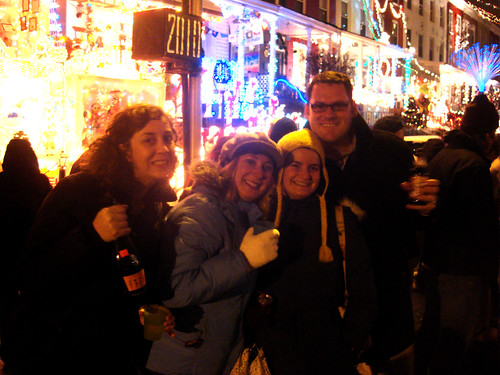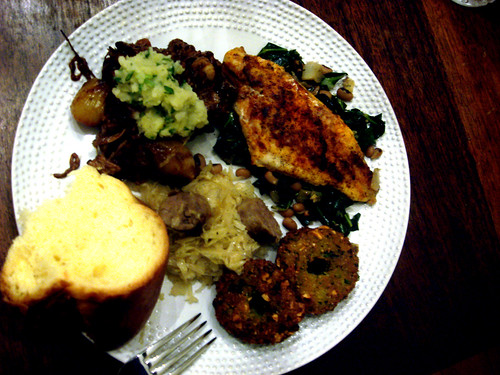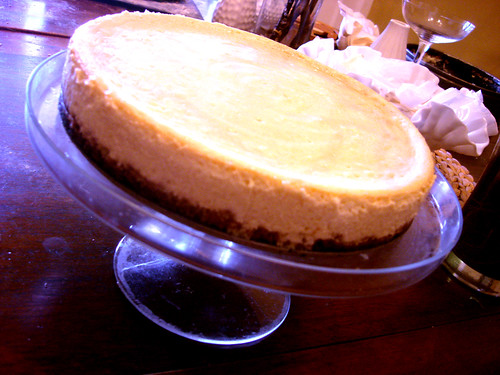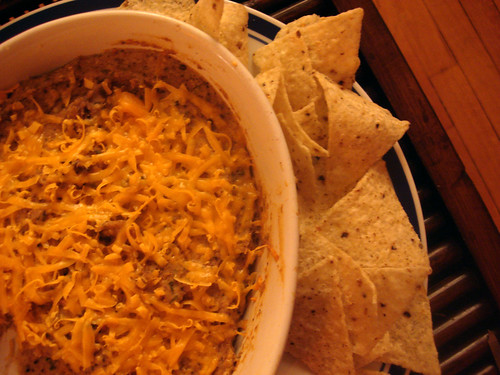skip to main |
skip to sidebar

 I've been researching cocktails for a seasonal winter cocktail menu and I have become obsessed with Rock & Rye. I knew Rye was once a big Maryland export but I didn't know much else about it. (Pikesville is a Bmore suburb although it's now produced in Kentucky, it still says "Old Maryland Style" on the bottle) Rock & Rye in basically infused rye with rock candy (hence the rock) and various spices depending on who you ask. Most recipes also include some form of horehound- an old fashioned cough remedy. Rock & Rye itself was though to cure colds-- I found this quote all over the web: "At a 1952 conference of the Common Cold Foundation, a prominent Johns Hopkins virologist, Dr. Thomas G. Ward, was asked what medicine could do against the stubborn rhinovirus. “Personally, my favorite treatment is old Maryland Rock and Rye,” he replied." Maybe it's just because I want it to work... but I swear it has helped combat my current cold. I am also in love with the strings of rock candy- they are so pretty. Contemplating a way to use them as a garnish without melting them. This is my Rock & Rye recipe compiled from various historical and non-historical accounts:
I've been researching cocktails for a seasonal winter cocktail menu and I have become obsessed with Rock & Rye. I knew Rye was once a big Maryland export but I didn't know much else about it. (Pikesville is a Bmore suburb although it's now produced in Kentucky, it still says "Old Maryland Style" on the bottle) Rock & Rye in basically infused rye with rock candy (hence the rock) and various spices depending on who you ask. Most recipes also include some form of horehound- an old fashioned cough remedy. Rock & Rye itself was though to cure colds-- I found this quote all over the web: "At a 1952 conference of the Common Cold Foundation, a prominent Johns Hopkins virologist, Dr. Thomas G. Ward, was asked what medicine could do against the stubborn rhinovirus. “Personally, my favorite treatment is old Maryland Rock and Rye,” he replied." Maybe it's just because I want it to work... but I swear it has helped combat my current cold. I am also in love with the strings of rock candy- they are so pretty. Contemplating a way to use them as a garnish without melting them. This is my Rock & Rye recipe compiled from various historical and non-historical accounts: - 1 bottle of rye
- handful orange slices
- handful lemon slices
- a string of rock candy-- maybe 6 inches or so?
- a few cloves
- a few cinnamon sticks
- a few horehound candies (make sure they use real horehound)
Steep in a pitcher for two days or so- until the sugar and the candies have dissolved completely. Strain and use. When it's done you can make R&R manhattans, toddies, on the rocks with gingerale or seltzer or even a R&R flip (pretty standard except for the rock and the maple which I added):- 1.5 oz rock & rye
- ¾ oz fresh lemon juice
- ¼ oz maple syrup
- dash bitters
- 1 large egg white
Shake with ice then strain into a glass. Flips are one of my favorite old fashioned types of drinks- they always involve egg white which makes them super frothy when shaken. I use powdered whites in drinks because they are easier and won't give you salmonella. You could make this drink with plain rye as well.
 My master lucky New Year's Eve foods list. This is complied from a whole lot of sources over a number of years. This is a good article for a starting point and I just noticed that Martha has a lucky food menu as well.circle or ring shaped food- many cultures believe that anything in the shape of a ring or circle is good luck, because it symbolizes "coming full circle," completing a year's cycle. donuts- the Dutch believe that eating round donuts or fritter on New Year's Day will bring good fortune as they are round and/or ring shaped. Traditionally they eat ollie bollen, puffy, donut-like pastries filled with apples, raisins, and currants. Italy has chiacchiere, which are honey-drenched balls of pasta dough fried and dusted with powdered sugar. Poland, Hungary, and the Netherlands also eat donuts for luck. b-e peas/ lentils/ split peas- black-eyed peas and other legumes have long been considered good luck in many cultures. Legumes including beans, peas, and lentils are also symbolic of money. Their small, seedlike appearance resembles coins that swell when cooked so they are consumed with financial rewards in mind. In Italy, it's customary to eat cotechino con lenticchie or sausages and green lentils, just after midnight—a particularly propitious meal because pork has it's own lucky associations. Germans also partner legumes and pork, usually lentil or split pea soup with sausage. In Brazil, the first meal of the New Year is usually lentil soup or lentils and rice, and in Japan, the osechi-ryori, a group of symbolic dishes eaten during the first three days of the new year, includes sweet black beans called kuro-mame. The black eyed pea ihas another lucky legend—supposedly during the Civil War, the town of Vicksburg, Virginia, ran out of food while under attack. The residents fortunately discovered black-eyed peas and the legume was thereafter considered lucky.cabbage/greens- eating vegetables such as cabbage, collard greens, mustard greens, chard, or kale for New Year's seems to be associated with the idea that the folded greens symbolize money and are thought to bring good fortune. While southerners in the U.S. are often adamant that the choice must be collard greens, in Germany Sauerkraut is traditional, and in Denmark Kale cooked in white sauce and sprinkled with sugar and cinnamon is common for New Year's luck.rice- the many grains signify abundance, while rice greatly increases volume when it cooks, all pointing toward growth in the coming year. Rice turns up on New Year's tables from Vietnam to Scandinavia, where a silky Swedish rice pudding is served. Like the St. Basil's coin, an almond is hidden in the pudding, and the lucky recipient is said to enjoy good fortune. Also for New Year's feasting, sticky mochi rice is pressed into cakes and broiled or eaten in soup called ozoni. Large mochi cakes are first offered to the gods, then cut into pieces and eaten by the family to bring luck and good health. Koreans also enjoy rice cake soup on New Year's Day for luck and good health. They believe that each bowl eaten adds one year to your life. pork/sausage- the hog, and thus its meat, is considered lucky because it symbolizes prosperity. Having first domesticated the pig, the Chinese consider pork to be a lucky food, but they are hardly alone in that. The pig is a symbol of good fortune around the world, perhaps because a family who owns one is guaranteed to eat well. The animal is wholly edible, after all, from snout to foot. Moreover, some argue that the pig signifies moving forward into the new year because it always roots ahead with its snout to the ground. (You might keep that in mind if you're planning to splurge on lobster for New Year's Eve this year. They typically move backward.) Thus, in Austria the new year begins with roast suckling pig served at a table decorated with piglets made out of marzipan or chocolate. In Germany, pork and sauerkraut is the order of the day and bakeries offer pig-shaped breads for the new year. In Italy they celebrate New Year's with pork sausage. Roast suckling pig is served for New Year's in Cuba, Spain, Portugal and Hungary. Different pork dishes such as pig's feet are enjoyed in Sweden. Pork is also consumed in Italy and the United States, where thanks to its rich fat content, it signifies wealth, prosperity and fattening wallets. pancakes- for Germans, pancakes are considered so lucky they are the very first thing eaten in the new year, the batter ladled into the skillet as the clock strikes midnight. The French also indulge in a stack of sweet crepes for good luck.honey- a traditional Jewish new year foodcake/bread/brioche with coins- Going back to pre-Christian days, ring-shaped breads and cakes were always considered fortunate because they signified continuity by "coming full circle." Many cultures today make special cakes or sweets around New Year's in round shapes which symbolize coins. Often they are incredibly sweet, with the thought that overindulgence (or over sweetening) stands for a wish for abundance. Traditional cakes or bread with symbolic items baked inside are a New Year's custom in many places. Armenia has their darin: a large flat bread baked with a coin inside; whoever gets the piece with the coin is assured good luck for the coming year. In France, folks eat brioche on New Year's Eve or New Year's Day for love, happiness and good health. The brioche can be studded with candied fruit. Sometimes a figurine is baked inside. The person who finds the figurine can make a New Year's wish. In Greece sweet breads called vasilopita contain coins, and the person who gets the slice with the coin will have good luck that year. In England Christmas puddings often contain coins or small trinkets which symbolize what will happen to you in the new year. In Mexico, a traditional King's Cake or Rosca de Reyes contains a doll and other surprises, and the person who gets the doll becomes king for the day and must find a woman to be his queen. Sweden and Norway have similar rituals in which they hide a whole almond in rice pudding—whoever gets the nut is guaranteed great fortune in the new year. The trinket you get serves as a sort of fortune to tell you what will come to you in the new year breads- in Italy, there are many sweet treats for the season, but the most interesting might be an almond-filled cake baked in the shape of a snake. The theory is that as the snake sheds its skin, it symbolizes leaving the past year behind. Eastern European’s serve poppy seed pastries or breads that also recall the coins of prosperity. In Ireland a fruitcake called Barm Brack is served, but, alas, only a few bites are eaten. The rest is thrown at the door to ward off famine from the house in the new year.12 grapes- in Spain, Portugal, Mexico, Cuba, Ecuador, and Peru it is often traditional to eat 12 grapes at the stroke of midnight, one for each month in the coming year. Some people say the name of the month as they eat each grape, and if that grape is sweet, it will be a good month. For most, the goal is to swallow all the grapes before the last stroke of midnight, but Peruvians insist on taking in a 13th grape for good measure.pomegranate- in Turkey pomegranates symbolize good luck for the coming year because of the red color and the shape of the seeds, which represent money and prosperity. In Southern Italy and the Eastern Mediterranean, pomegranates are considered lucky because of their bright red color and the shape of the seeds, which represent wealth and prosperityred food- red (or pink) food is considered lucky in Japan and Turkey. In Vietnam, the watermelon is the ultimate New Year's fruit because the meat is red, the luckiest color.fish/carp/red snapper/herring- fish, especially those with silver scales, are thought to be a lucky food for the new year in some places. In Germany many New Year's feasts will contain carp, and some people will put some of the scales from the fish in their wallet to bring luck. Many people in Germany or Poland eat Pickled Herring on New Year's, with good fortune coming to those who eat it. Herring represents abundance because they swim in large families. In Denmark and other Scandinavian countries, Boiled Cod with Mustard Sauce is eaten to bring in the new year. In Sweden, the New Year's smorgasbord always has a variety of fish dishes for luck. In Japan, herring roe is eaten on New Year's for fertility, shrimp for longevity, red snapper for it’s lucky red color and dried sardines for a good harvest. In China, cooked whole fish signify continuity and longevity. In Vietnam, a whole carp is cooked, as the carp is thought to carry the god of good luck on its back.buckwheat soba noodles- in Japan buckwheat soba noodles are an important part of the Japanese New Year Celebrations. The long noodles are meant to symbolize long life, and you should take care to eat them without breaking the noodles. Buddhist Monks also eat a type of crunchy noodles at midnight on New Year's Eve, and in Buddhist temples bells are rung 108 times. The belief is if you can suck up one noodle completely without it breaking, you will have a long life.cookies- cookies that are shaped like rings are thought by some people to represent the year coming full circle, and are believed to bring luck. An example of this type of lucky food is the Linzer Torte Cookies eaten in many eastern European countries. In Scotland three-cornered cookies called Hogmanays are also eaten for good luck.sauternes- to sweeten the New Year's Day celebration, the French drink Sauternes, a dessert wine.chocolate- to sweeten the New Year's Day celebration, the French also eat chocolate.beef- Eastern Europeans, such as Hungarians, Czechs, Poles and Russians, may eat lentils or sauerkraut, in beef stews, sometimes with potatoes or dumplings. The long strands of sauerkraut symbolize long life, and the potatoes may represent having humble food available daily on the table. Pork is not the good luck food for Baltimoreans of German descent. They prefer sauerkraut and beef shortribs, rather than pork, as a good luck dish for New Years.full table- An Armenian tradition during the New Year is to have a lot of dried fruits and nuts on the table in order to enter the New Year with a table full of food In addition to representing bounty for the year, a table with fruits and nuts is a nod to the harvest. During harvest season in the old days, folks would preserve both to have those little luxuries during the wintertime. In Germany, it's customary to leave a little bit of each food on your plate past midnight to guarantee a stocked pantry in the New Year. In the Philippines, you need to have the table covered with as many dishes as possible at the stroke of midnight. In Scotland, where New Year's is called Hogmanay, there is a tradition called "first footing," in which the first person to enter a home after the new year determines what kind of year the residents will have. The "first footer" often brings symbolic gifts like coal to keep the house warm or baked goods such as shortbread, oat cakes, and a fruit caked called black bun, to make sure the household always has food. In Switzerland, things are much simpler. A large dollop of whipped cream is dropped on the kitchen floor as a symbol of surplus food and wealth. bad luck- lobster is almost universally avoided since it walks backward. That is contradicted in Japan, where New Year's lobster decorations are prized; the lobster's curved back resembles an elderly person's posture, symbolizing a wish for longevity. For the same reason, chickens are seldom included on the New Year's platter. They move backward when they scratch, which could mean regret, and you might be scratching around for money like a chicken scratches for food on the ground. Another theory warns against eating any winged fowl because good luck could fly away like a bird.
My master lucky New Year's Eve foods list. This is complied from a whole lot of sources over a number of years. This is a good article for a starting point and I just noticed that Martha has a lucky food menu as well.circle or ring shaped food- many cultures believe that anything in the shape of a ring or circle is good luck, because it symbolizes "coming full circle," completing a year's cycle. donuts- the Dutch believe that eating round donuts or fritter on New Year's Day will bring good fortune as they are round and/or ring shaped. Traditionally they eat ollie bollen, puffy, donut-like pastries filled with apples, raisins, and currants. Italy has chiacchiere, which are honey-drenched balls of pasta dough fried and dusted with powdered sugar. Poland, Hungary, and the Netherlands also eat donuts for luck. b-e peas/ lentils/ split peas- black-eyed peas and other legumes have long been considered good luck in many cultures. Legumes including beans, peas, and lentils are also symbolic of money. Their small, seedlike appearance resembles coins that swell when cooked so they are consumed with financial rewards in mind. In Italy, it's customary to eat cotechino con lenticchie or sausages and green lentils, just after midnight—a particularly propitious meal because pork has it's own lucky associations. Germans also partner legumes and pork, usually lentil or split pea soup with sausage. In Brazil, the first meal of the New Year is usually lentil soup or lentils and rice, and in Japan, the osechi-ryori, a group of symbolic dishes eaten during the first three days of the new year, includes sweet black beans called kuro-mame. The black eyed pea ihas another lucky legend—supposedly during the Civil War, the town of Vicksburg, Virginia, ran out of food while under attack. The residents fortunately discovered black-eyed peas and the legume was thereafter considered lucky.cabbage/greens- eating vegetables such as cabbage, collard greens, mustard greens, chard, or kale for New Year's seems to be associated with the idea that the folded greens symbolize money and are thought to bring good fortune. While southerners in the U.S. are often adamant that the choice must be collard greens, in Germany Sauerkraut is traditional, and in Denmark Kale cooked in white sauce and sprinkled with sugar and cinnamon is common for New Year's luck.rice- the many grains signify abundance, while rice greatly increases volume when it cooks, all pointing toward growth in the coming year. Rice turns up on New Year's tables from Vietnam to Scandinavia, where a silky Swedish rice pudding is served. Like the St. Basil's coin, an almond is hidden in the pudding, and the lucky recipient is said to enjoy good fortune. Also for New Year's feasting, sticky mochi rice is pressed into cakes and broiled or eaten in soup called ozoni. Large mochi cakes are first offered to the gods, then cut into pieces and eaten by the family to bring luck and good health. Koreans also enjoy rice cake soup on New Year's Day for luck and good health. They believe that each bowl eaten adds one year to your life. pork/sausage- the hog, and thus its meat, is considered lucky because it symbolizes prosperity. Having first domesticated the pig, the Chinese consider pork to be a lucky food, but they are hardly alone in that. The pig is a symbol of good fortune around the world, perhaps because a family who owns one is guaranteed to eat well. The animal is wholly edible, after all, from snout to foot. Moreover, some argue that the pig signifies moving forward into the new year because it always roots ahead with its snout to the ground. (You might keep that in mind if you're planning to splurge on lobster for New Year's Eve this year. They typically move backward.) Thus, in Austria the new year begins with roast suckling pig served at a table decorated with piglets made out of marzipan or chocolate. In Germany, pork and sauerkraut is the order of the day and bakeries offer pig-shaped breads for the new year. In Italy they celebrate New Year's with pork sausage. Roast suckling pig is served for New Year's in Cuba, Spain, Portugal and Hungary. Different pork dishes such as pig's feet are enjoyed in Sweden. Pork is also consumed in Italy and the United States, where thanks to its rich fat content, it signifies wealth, prosperity and fattening wallets. pancakes- for Germans, pancakes are considered so lucky they are the very first thing eaten in the new year, the batter ladled into the skillet as the clock strikes midnight. The French also indulge in a stack of sweet crepes for good luck.honey- a traditional Jewish new year foodcake/bread/brioche with coins- Going back to pre-Christian days, ring-shaped breads and cakes were always considered fortunate because they signified continuity by "coming full circle." Many cultures today make special cakes or sweets around New Year's in round shapes which symbolize coins. Often they are incredibly sweet, with the thought that overindulgence (or over sweetening) stands for a wish for abundance. Traditional cakes or bread with symbolic items baked inside are a New Year's custom in many places. Armenia has their darin: a large flat bread baked with a coin inside; whoever gets the piece with the coin is assured good luck for the coming year. In France, folks eat brioche on New Year's Eve or New Year's Day for love, happiness and good health. The brioche can be studded with candied fruit. Sometimes a figurine is baked inside. The person who finds the figurine can make a New Year's wish. In Greece sweet breads called vasilopita contain coins, and the person who gets the slice with the coin will have good luck that year. In England Christmas puddings often contain coins or small trinkets which symbolize what will happen to you in the new year. In Mexico, a traditional King's Cake or Rosca de Reyes contains a doll and other surprises, and the person who gets the doll becomes king for the day and must find a woman to be his queen. Sweden and Norway have similar rituals in which they hide a whole almond in rice pudding—whoever gets the nut is guaranteed great fortune in the new year. The trinket you get serves as a sort of fortune to tell you what will come to you in the new year breads- in Italy, there are many sweet treats for the season, but the most interesting might be an almond-filled cake baked in the shape of a snake. The theory is that as the snake sheds its skin, it symbolizes leaving the past year behind. Eastern European’s serve poppy seed pastries or breads that also recall the coins of prosperity. In Ireland a fruitcake called Barm Brack is served, but, alas, only a few bites are eaten. The rest is thrown at the door to ward off famine from the house in the new year.12 grapes- in Spain, Portugal, Mexico, Cuba, Ecuador, and Peru it is often traditional to eat 12 grapes at the stroke of midnight, one for each month in the coming year. Some people say the name of the month as they eat each grape, and if that grape is sweet, it will be a good month. For most, the goal is to swallow all the grapes before the last stroke of midnight, but Peruvians insist on taking in a 13th grape for good measure.pomegranate- in Turkey pomegranates symbolize good luck for the coming year because of the red color and the shape of the seeds, which represent money and prosperity. In Southern Italy and the Eastern Mediterranean, pomegranates are considered lucky because of their bright red color and the shape of the seeds, which represent wealth and prosperityred food- red (or pink) food is considered lucky in Japan and Turkey. In Vietnam, the watermelon is the ultimate New Year's fruit because the meat is red, the luckiest color.fish/carp/red snapper/herring- fish, especially those with silver scales, are thought to be a lucky food for the new year in some places. In Germany many New Year's feasts will contain carp, and some people will put some of the scales from the fish in their wallet to bring luck. Many people in Germany or Poland eat Pickled Herring on New Year's, with good fortune coming to those who eat it. Herring represents abundance because they swim in large families. In Denmark and other Scandinavian countries, Boiled Cod with Mustard Sauce is eaten to bring in the new year. In Sweden, the New Year's smorgasbord always has a variety of fish dishes for luck. In Japan, herring roe is eaten on New Year's for fertility, shrimp for longevity, red snapper for it’s lucky red color and dried sardines for a good harvest. In China, cooked whole fish signify continuity and longevity. In Vietnam, a whole carp is cooked, as the carp is thought to carry the god of good luck on its back.buckwheat soba noodles- in Japan buckwheat soba noodles are an important part of the Japanese New Year Celebrations. The long noodles are meant to symbolize long life, and you should take care to eat them without breaking the noodles. Buddhist Monks also eat a type of crunchy noodles at midnight on New Year's Eve, and in Buddhist temples bells are rung 108 times. The belief is if you can suck up one noodle completely without it breaking, you will have a long life.cookies- cookies that are shaped like rings are thought by some people to represent the year coming full circle, and are believed to bring luck. An example of this type of lucky food is the Linzer Torte Cookies eaten in many eastern European countries. In Scotland three-cornered cookies called Hogmanays are also eaten for good luck.sauternes- to sweeten the New Year's Day celebration, the French drink Sauternes, a dessert wine.chocolate- to sweeten the New Year's Day celebration, the French also eat chocolate.beef- Eastern Europeans, such as Hungarians, Czechs, Poles and Russians, may eat lentils or sauerkraut, in beef stews, sometimes with potatoes or dumplings. The long strands of sauerkraut symbolize long life, and the potatoes may represent having humble food available daily on the table. Pork is not the good luck food for Baltimoreans of German descent. They prefer sauerkraut and beef shortribs, rather than pork, as a good luck dish for New Years.full table- An Armenian tradition during the New Year is to have a lot of dried fruits and nuts on the table in order to enter the New Year with a table full of food In addition to representing bounty for the year, a table with fruits and nuts is a nod to the harvest. During harvest season in the old days, folks would preserve both to have those little luxuries during the wintertime. In Germany, it's customary to leave a little bit of each food on your plate past midnight to guarantee a stocked pantry in the New Year. In the Philippines, you need to have the table covered with as many dishes as possible at the stroke of midnight. In Scotland, where New Year's is called Hogmanay, there is a tradition called "first footing," in which the first person to enter a home after the new year determines what kind of year the residents will have. The "first footer" often brings symbolic gifts like coal to keep the house warm or baked goods such as shortbread, oat cakes, and a fruit caked called black bun, to make sure the household always has food. In Switzerland, things are much simpler. A large dollop of whipped cream is dropped on the kitchen floor as a symbol of surplus food and wealth. bad luck- lobster is almost universally avoided since it walks backward. That is contradicted in Japan, where New Year's lobster decorations are prized; the lobster's curved back resembles an elderly person's posture, symbolizing a wish for longevity. For the same reason, chickens are seldom included on the New Year's platter. They move backward when they scratch, which could mean regret, and you might be scratching around for money like a chicken scratches for food on the ground. Another theory warns against eating any winged fowl because good luck could fly away like a bird.
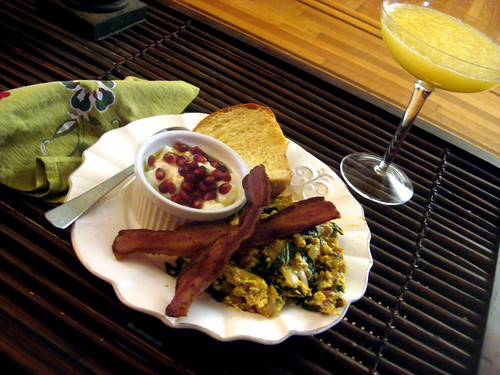 Bacon, eggs with lucky collard greens and black eyed peas, brioche, and greek yogurt with pomegranate and honey. And a mimosa... it is new years day after all...
Bacon, eggs with lucky collard greens and black eyed peas, brioche, and greek yogurt with pomegranate and honey. And a mimosa... it is new years day after all...

